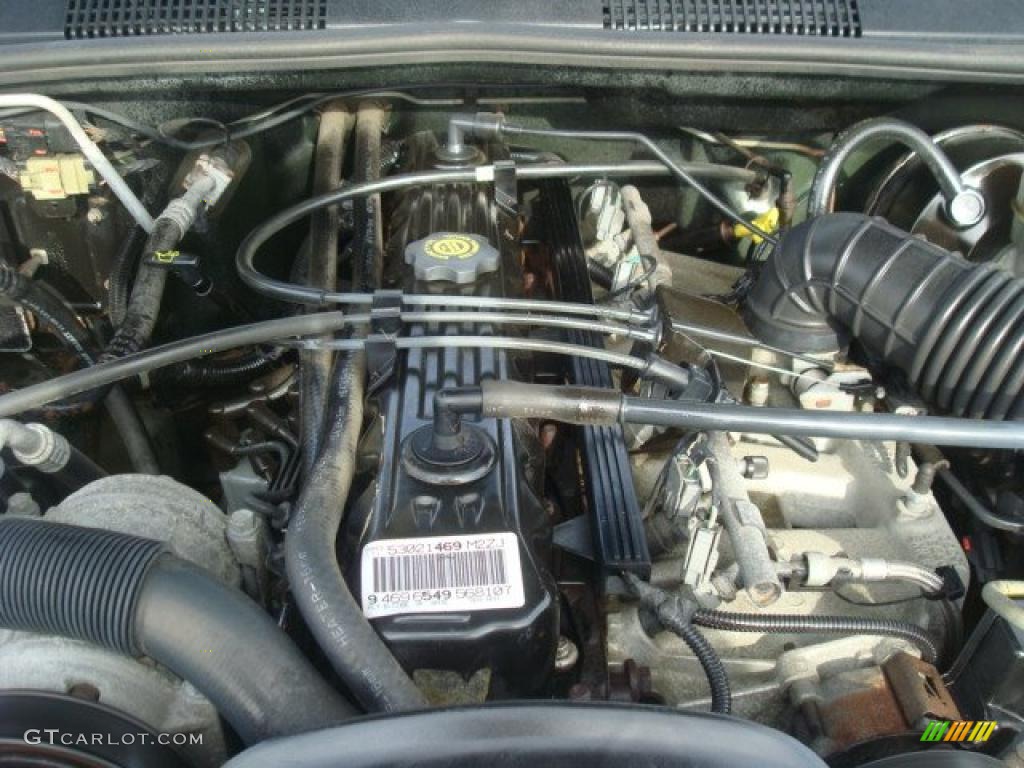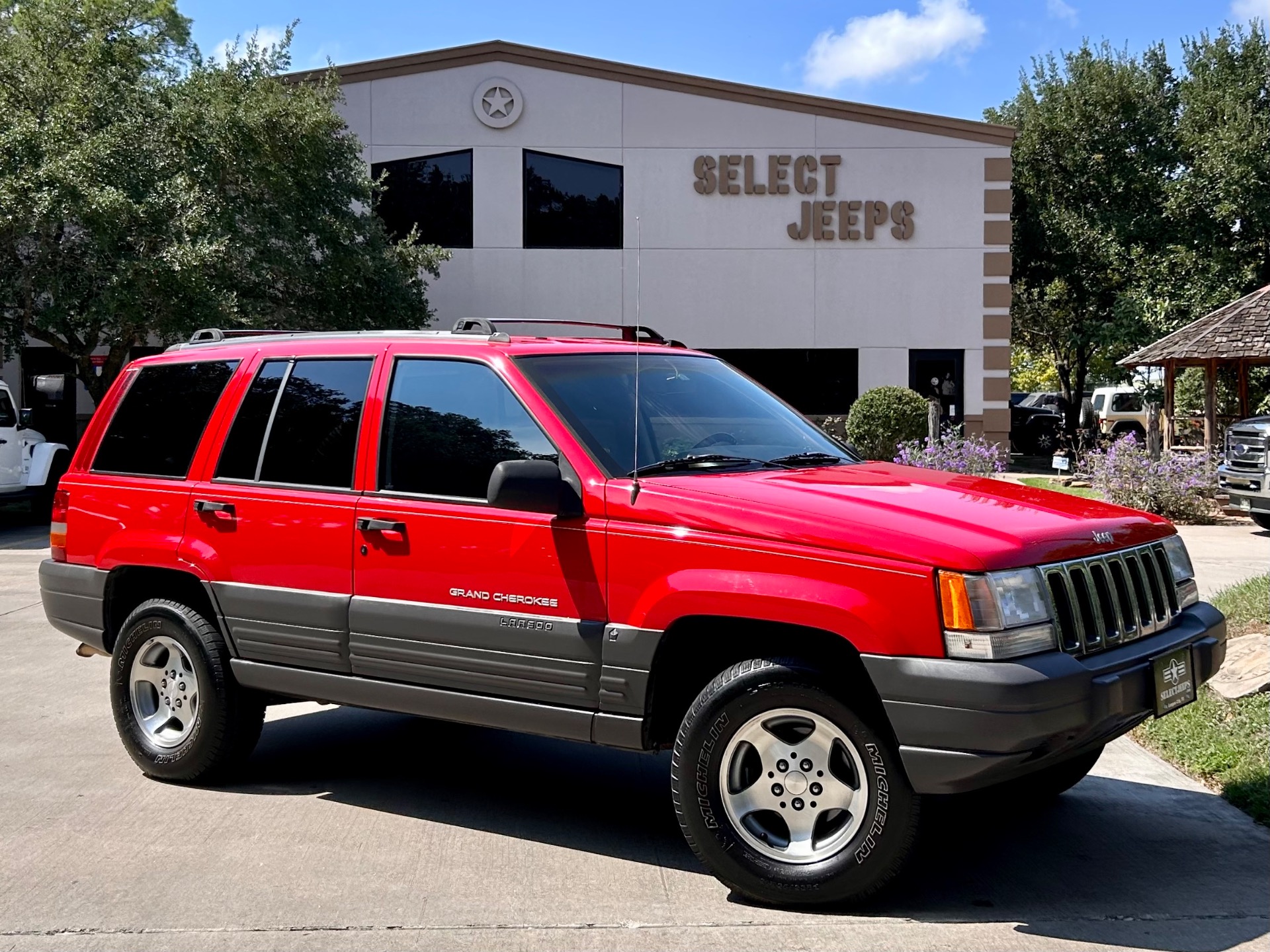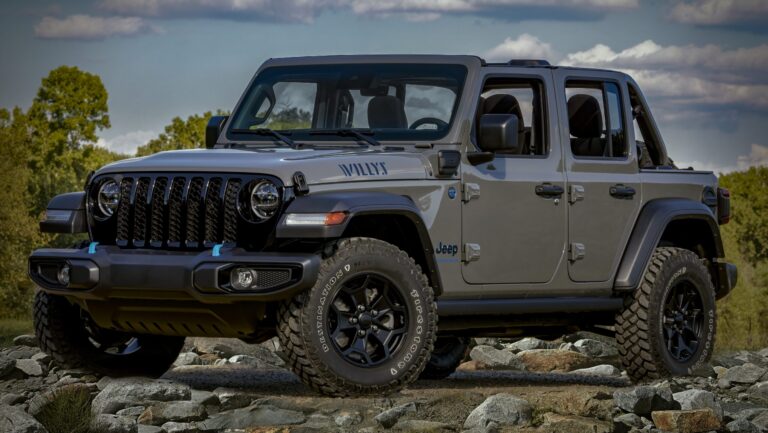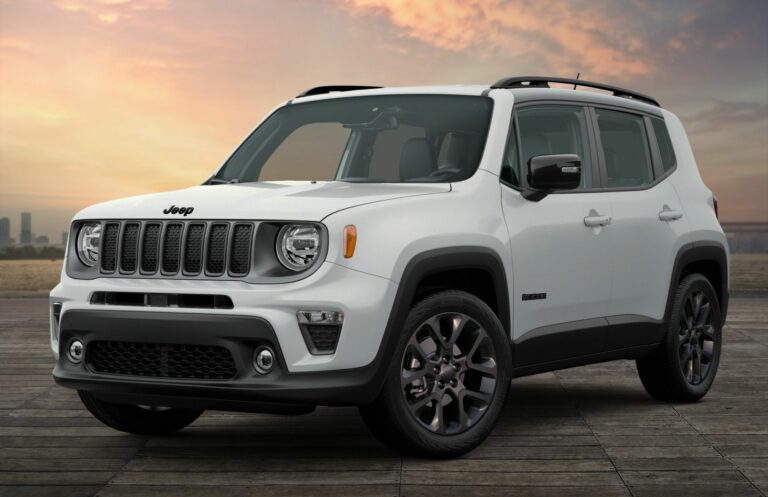1996 Jeep Grand Cherokee Laredo: A Deep Dive into a Quintessential American SUV
1996 Jeep Grand Cherokee Laredo: A Deep Dive into a Quintessential American SUV jeeps.truckstrend.com
In the annals of automotive history, few vehicles capture the essence of an era quite like the 1996 Jeep Grand Cherokee Laredo. Emerging during the height of the SUV boom, the ZJ generation Grand Cherokee redefined the segment, blending rugged off-road capability with a newfound level of on-road comfort and luxury. The Laredo trim, in particular, stood out as the sweet spot, offering a compelling balance of features, performance, and value that made it a ubiquitous sight on American roads and trails. This comprehensive guide will delve into what made the 1996 Grand Cherokee Laredo such a significant vehicle, its enduring appeal, and what potential owners need to know.
A Legacy Forged in Steel: Understanding the 1996 Jeep Grand Cherokee ZJ
1996 Jeep Grand Cherokee Laredo: A Deep Dive into a Quintessential American SUV
The Jeep Grand Cherokee (chassis code ZJ) debuted in 1993, replacing the venerable Grand Wagoneer and positioning itself as a more upscale, refined sibling to the rugged Cherokee XJ. It quickly became a runaway success, setting new standards for what a sport utility vehicle could be. By 1996, the ZJ was in its stride, having ironed out initial quirks and solidified its reputation for combining genuine off-road prowess with acceptable daily drivability.
The Grand Cherokee line offered several trim levels, from the utilitarian SE to the luxurious Limited and the performance-oriented Orvis (a special edition for ’96). The Laredo, however, carved out its niche as the volume seller. It struck a harmonious chord between the basics and the bling, providing essential power amenities, a more comfortable interior than the base model, and the iconic Jeep 4×4 systems without the premium price tag of the higher trims. For many, the 1996 Laredo represented the quintessential Grand Cherokee experience: capable, comfortable, and undeniably American.
The Laredo Distinction: Features and Specifications
The 1996 Grand Cherokee Laredo was a testament to practical design and robust engineering. While it eschewed some of the creature comforts of the Limited, it offered a solid foundation that appealed to a wide range of buyers.
Powertrain Options: Powering the Legend
- 4.0L I6 (242 cubic inches) Inline-Six Engine: This legendary AMC-derived engine was the standard powerplant for the Laredo. Producing 185 horsepower and 220 lb-ft of torque, it was renowned for its bulletproof reliability, low-end torque, and ease of maintenance. Mated to a robust Aisin-Warner AW4 4-speed automatic transmission, this combination is often hailed as one of the most durable SUV powertrains ever made.
- 5.2L V8 (318 cubic inches) Engine: For those desiring more grunt, the optional 5.2L Magnum V8 delivered 220 horsepower and a healthy 295 lb-ft of torque. Paired with a Chrysler 46RE 4-speed automatic transmission, the V8 offered smoother acceleration and greater towing capacity, though at the expense of fuel economy.

Drivetrain: Go Anywhere Capability
Jeep’s reputation for 4×4 capability was central to the Grand Cherokee’s appeal, and the Laredo offered several options:
- Two-Wheel Drive (2WD): Available primarily for pavement dwellers, offering better fuel economy but sacrificing off-road capability.
- Command-Trac (Part-Time 4WD): Standard on many 4×4 Laredos, this system offered 2WD, 4-Hi (part-time), and 4-Lo. It was a rugged, traditional 4×4 system suitable for serious off-road use but not meant for use on dry pavement in 4WD modes.
- Selec-Trac (Full-Time/Part-Time 4WD): An optional upgrade, Selec-Trac provided the flexibility of 2WD, 4-Full Time, 4-Part Time, and 4-Lo. The 4-Full Time mode was particularly useful for varying road conditions, allowing the driver to keep the vehicle in 4WD on pavement, gravel, or slippery surfaces.

Interior and Exterior Appointments
The 1996 Laredo’s interior was a significant step up from basic utilitarianism. Standard features included:

- Cloth seating (available in various colors)
- Power windows, door locks, and mirrors
- Air conditioning
- AM/FM stereo with cassette player (CD changer often optional)
- Cruise control
- Tilt steering column
- Overhead console with compass and temperature display (on some models)
On the exterior, the Laredo was distinguished by its body-colored grille, side cladding, and bumpers, often accented with chrome trim. Standard alloy wheels (typically 15 or 16 inches) completed the look, giving it a more upscale appearance than the base SE.
Why Choose a 1996 Laredo Today? Enduring Appeal and Practical Benefits
Despite being nearly three decades old, the 1996 Grand Cherokee Laredo continues to attract a dedicated following. Its enduring appeal stems from several key advantages:
- Unmatched Off-Road Capability for the Price: Thanks to its solid front axle (Dana 30), robust 4×4 systems, and decent ground clearance, the ZJ Laredo remains an incredibly capable off-roader, especially when compared to modern unibody SUVs.
- Legendary Durability (Especially the 4.0L I6): The 4.0L engine is renowned for its ability to rack up hundreds of thousands of miles with proper maintenance. This makes the Laredo a fantastic choice for a reliable, budget-friendly daily driver or an off-road project.
- Comfortable and Practical Daily Driver: For an SUV of its era, the ZJ offered a surprisingly comfortable ride and a spacious interior, making it suitable for family duties, road trips, or commuting. Cargo space is ample, and the rear seats fold down for larger items.
- Affordability and Value: In the used market, 1996 Laredos are remarkably affordable, offering tremendous bang for the buck in terms of capability, features, and utility.
- Vast Aftermarket Support and Community: The ZJ Grand Cherokee has a massive and passionate enthusiast community. This translates to readily available parts (new and used), extensive how-to guides, and a wealth of knowledge for repairs and modifications.
- Simple to Work On: Compared to modern, complex vehicles, the ZJ is relatively straightforward for the home mechanic, making DIY repairs and maintenance feasible.
Navigating Ownership: Important Considerations and Common Challenges
While the 1996 Laredo offers many benefits, potential owners should be aware of common issues and important considerations:
- Fuel Economy: Neither the 4.0L nor the 5.2L V8 is particularly fuel-efficient. Expect around 15-18 MPG combined for the I6 and 12-16 MPG for the V8, depending on driving style and condition.
- Rust: Like many vehicles of its age, rust can be a significant issue, especially in areas with road salt. Check rocker panels, floorboards, fender wells, and subframe components thoroughly.
- Common Mechanical Issues:
- 4.0L Specific: Oil leaks (valve cover, oil pan, rear main seal), cracked exhaust manifolds, cooling system problems (water pump, radiator, fan clutch, thermostat housing).
- 5.2L V8 Specific: Plenum gasket leaks (leading to oil consumption), distributor issues, and occasional lifter noise.
- Transmissions: The AW4 (4.0L) is generally robust but needs fluid changes. The 46RE (5.2L) can be prone to issues if neglected, particularly with the overdrive unit.
- Electrical Gremlins: Window regulators failing, blend door actuators (HVAC system), and various sensor failures (Crank Position Sensor is common on 4.0L).
- Steering and Suspension: Worn ball joints, tie rod ends, control arm bushings, and steering box play are common with age and mileage. "Death wobble" (a violent steering wheel shake) can occur due to worn components.
- Transfer Case: Ensure proper operation of Command-Trac or Selec-Trac. Leaks are common.
- Safety Features: Compared to modern vehicles, the 1996 Laredo has fewer advanced safety features. Airbags are present, but stability control, traction control, and advanced driver-assist systems are absent.
- Maintenance History is Key: A well-maintained example will save you headaches and money down the road. Look for records of regular fluid changes and proactive repairs.
Tips for Buying and Maintaining Your ZJ Laredo
If you’re considering a 1996 Grand Cherokee Laredo, here’s some practical advice:
- Pre-Purchase Inspection (PPI): This is non-negotiable. Have a trusted mechanic (ideally one familiar with Jeeps) inspect the vehicle thoroughly, especially for rust, fluid leaks, drivetrain health, and common ZJ issues.
- Test Drive Extensively: Listen for unusual noises, check all electrical components (windows, AC, radio), test the 4WD system (if applicable), and ensure smooth shifting.
- Check for Modifications: While many ZJs are modified, be wary of poorly executed lifts or extreme off-road setups that might have caused undue stress on components.
- Budget for Maintenance: Even a well-maintained ZJ will require ongoing attention due to its age. Set aside a budget for regular fluid changes, tire replacements, and addressing age-related wear.
- DIY is Your Friend: Embrace the vast online resources and community. Learning basic maintenance tasks can save you significant money.
- Address Issues Promptly: Small leaks or noises can quickly escalate if ignored. Nip problems in the bud to prevent larger, more expensive repairs.
- Consider Your Use Case: If you need a serious off-roader, the 4.0L with Selec-Trac is often preferred. If it’s primarily a highway cruiser and tow rig, the 5.2L V8 might be better.
Price Table: 1996 Jeep Grand Cherokee Laredo
| Feature/Specification | Details | Original MSRP (Approx. for Laredo 4×4) | Current Used Price Range (Good/Fair/Poor) |
|---|---|---|---|
| Year | 1996 | N/A | N/A |
| Make | Jeep | N/A | N/A |
| Model | Grand Cherokee Laredo | N/A | N/A |
| Engine Options | 4.0L I6: 185 hp, 220 lb-ft torque. Highly durable. 5.2L V8: 220 hp, 295 lb-ft torque. More power, better towing. |
N/A | N/A |
| Transmission | 4-speed Automatic (AW4 for I6, 46RE for V8) | N/A | N/A |
| Drivetrain Options | 2WD: Rear-wheel drive only. 4WD Command-Trac: Part-time 4×4. 4WD Selec-Trac: Full-time/part-time 4×4 (more versatile). |
$25,000 – $28,000 (depending on options) | Good: $3,000 – $7,000+ Fair: $1,500 – $3,000 Poor: Under $1,500 (project vehicle) |
| Seating Capacity | 5 Passengers | N/A | N/A |
| Towing Capacity | Up to 5,000 lbs (with 5.2L V8 and proper equipment) | N/A | N/A |
| Standard Laredo Features | Cloth Seats, Power Windows/Locks/Mirrors, Air Conditioning, AM/FM Cassette Stereo, Cruise Control, Tilt Steering, Alloy Wheels, Body-colored Trim. | N/A | N/A |
Note: Original MSRP is approximate and varied based on options and packages. Current used prices are highly dependent on condition, mileage, maintenance history, location, and specific options. Pristine, low-mileage examples or those with desirable modifications can command higher prices.
Frequently Asked Questions (FAQ)
Q1: Is the 4.0L inline-six or the 5.2L V8 better for the 1996 Grand Cherokee Laredo?
A1: It depends on your priorities. The 4.0L I6 is legendary for its durability and easier maintenance, making it ideal for a reliable daily driver or a serious off-roader due to its strong low-end torque. The 5.2L V8 offers more horsepower and torque, better for towing or if you simply prefer the power of a V8. However, the V8 is less fuel-efficient and can have more complex maintenance needs.
Q2: What’s the difference between Command-Trac and Selec-Trac?
A2: Command-Trac (NP231) is a part-time 4WD system, meaning you should only engage 4WD on slippery surfaces like snow, ice, or dirt. Using it on dry pavement can cause drivetrain binding and damage. Selec-Trac (NP242) is a full-time/part-time system. It offers a "4-Full Time" mode that can be used on any surface, including dry pavement, making it more versatile for varying road conditions. Both offer 4-Low for serious off-roading.
Q3: Are parts still available for the 1996 ZJ Grand Cherokee?
A3: Yes, absolutely! Thanks to the ZJ’s popularity and long production run, aftermarket support is excellent. Most common wear items, mechanical parts, and even some body panels are readily available from major auto parts stores, online retailers, and salvage yards.
Q4: What kind of fuel economy can I expect?
A4: Fuel economy is not a strong suit. For the 4.0L I6, expect around 15-18 miles per gallon (MPG) combined. For the 5.2L V8, it’s typically lower, around 12-16 MPG combined. These figures can vary greatly depending on driving habits, vehicle condition, and tire size.
Q5: Can a 1996 Grand Cherokee Laredo be a reliable daily driver today?
A5: Yes, with proper maintenance and a good pre-purchase inspection, a 1996 Grand Cherokee Laredo can be a very reliable daily driver. The 4.0L I6 is particularly well-suited for this. However, like any older vehicle, expect to address age-related wear and tear.
Q6: What is "death wobble" and how do I fix it?
A6: "Death wobble" is a violent, uncontrollable oscillation of the front wheels that typically occurs at highway speeds after hitting a bump. It’s almost always caused by worn or loose steering and suspension components, such as ball joints, tie rod ends, track bar bushings, or a worn steering box. Fixing it involves systematically diagnosing and replacing the worn components.
Conclusion
The 1996 Jeep Grand Cherokee Laredo stands as a testament to American automotive design: a capable, versatile, and enduring SUV that blended rugged utility with everyday comfort. Whether you’re an off-road enthusiast seeking a capable platform, a budget-conscious buyer needing a practical family hauler, or simply an admirer of classic Jeeps, the ZJ Laredo offers a compelling package. With its iconic styling, robust powertrains, and a passionate community, this 1996 model isn’t just a vehicle; it’s a piece of automotive history that continues to deliver adventure and reliability to those who appreciate its timeless appeal. Its legacy lives on, one trail and highway mile at a time.





